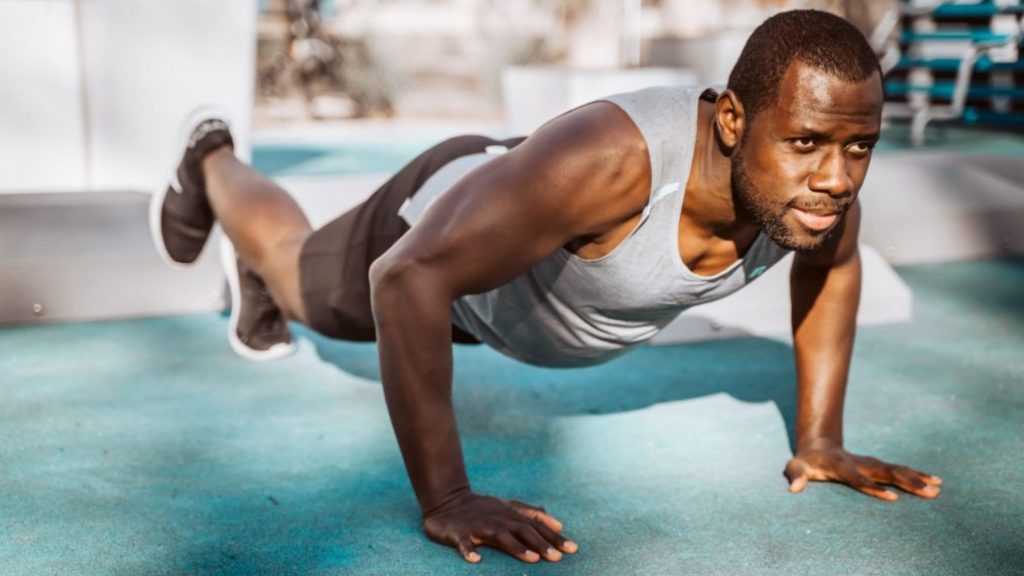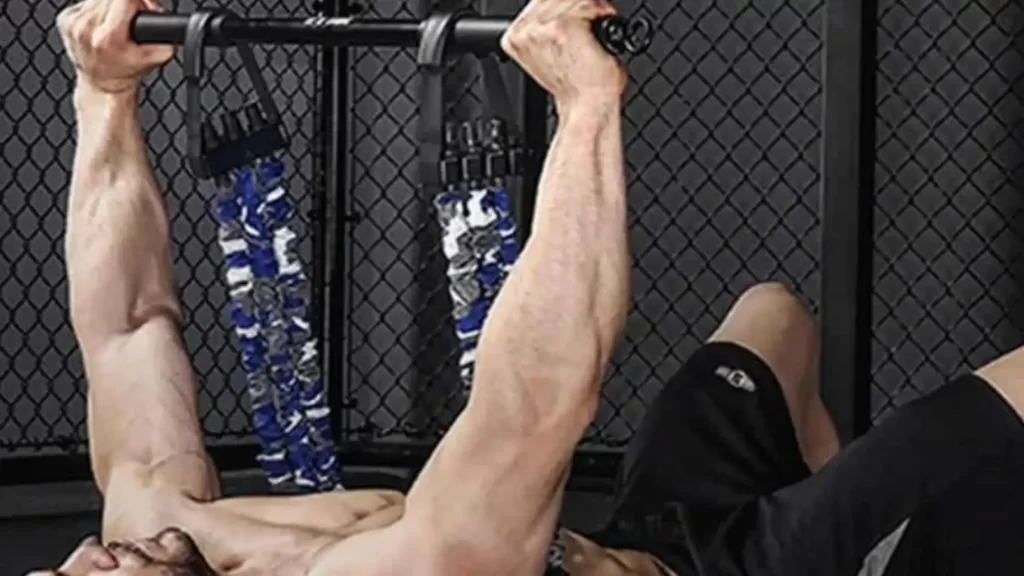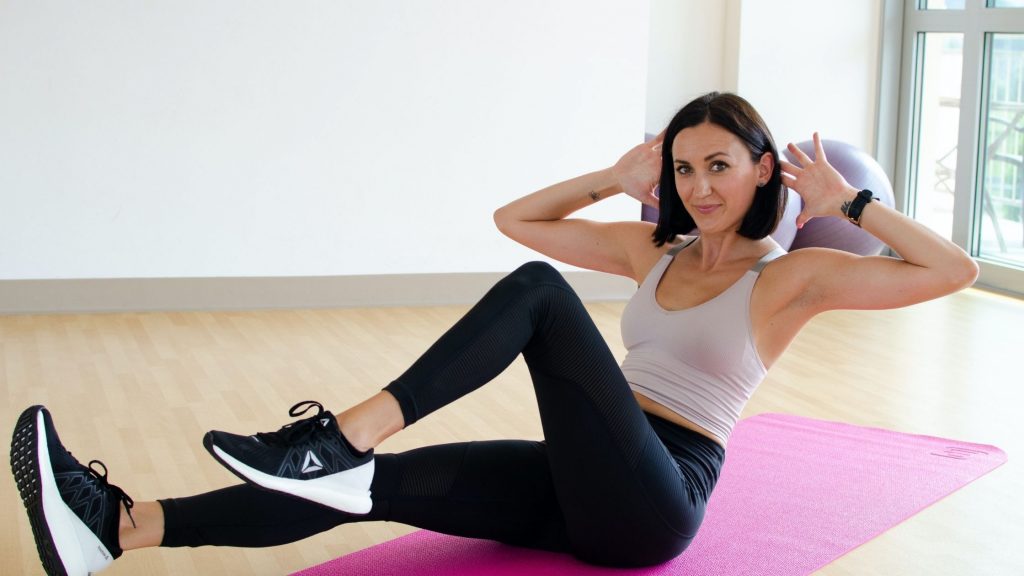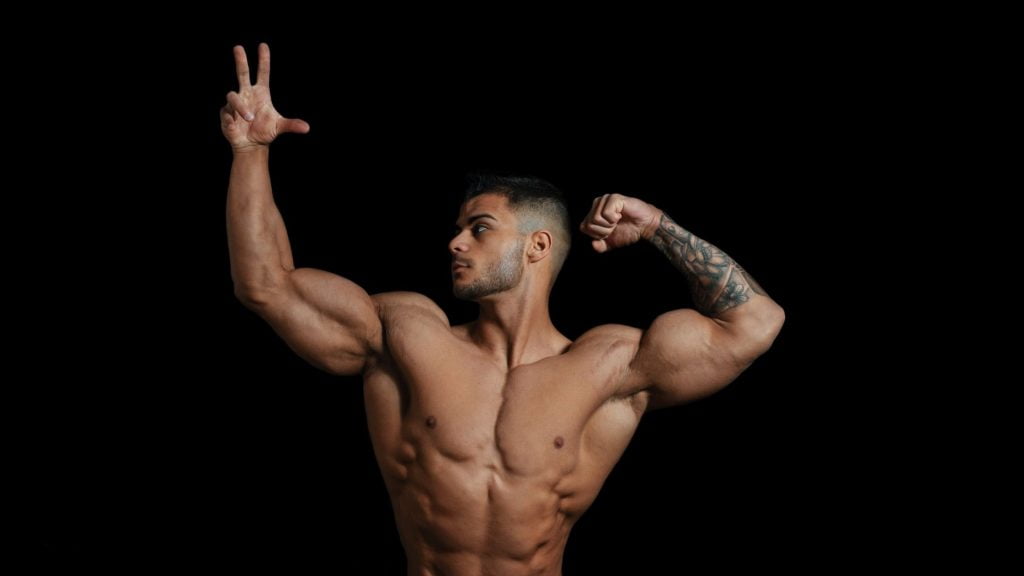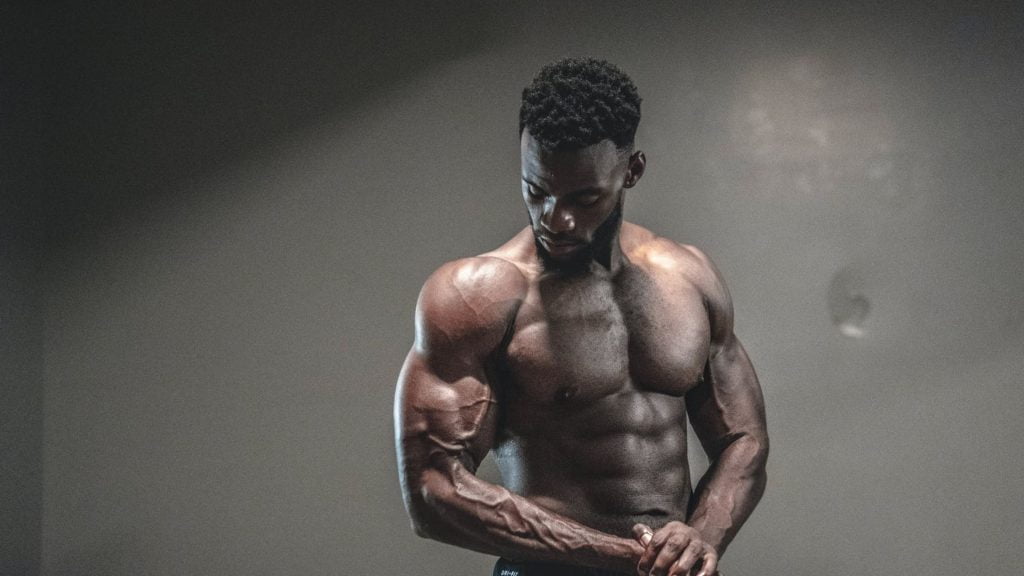Push ups for biceps is an excellent way to build your upper body strength. Building biceps is essential for someone who belongs to any other profession where their arms need to be strong and toned.
Push Ups For Biceps are one of the best exercises you can do for biceps growth. The Push Ups For Biceps also call upon two other muscle groups in your body, triceps and pectoral. It is the simplest way to work out your chest, arms, and shoulders. It can be done anywhere, anytime. You don’t need any equipment.
I’m Pavel Krotov and I’m a fitness instructor who wants to teach my clients to live an active life. Years of experience helped me get to the level where I am today — where people turn to me when they’re ready to start living an active lifestyle.
You might have wondered if there is a way to build your biceps without dumbbell curls or barbell curls. It turns out that push-ups are a great way to build up your biceps. In this piece, we will take a look at how this fascinating workout serves as an ideal exercise to build up the biceps.

IN THIS ARTICLE
What is Push-Ups?
Push Ups For Biceps One of the best exercises to build strength in your chest, arms, and shoulders is push-up. Push-ups are an effective exercise for strengthening the chest, shoulders, triceps, and core. Push-ups are a compound exercise, meaning they work for several muscle groups at one time. During a push-up, the pectoral muscles are doing most of the work, but the core, shoulders, back, and triceps are also engaged.
Push Ups For Biceps are a classic exercise for a reason. They work a ton of muscles at one time, which is why they’re so highly effective. They have been used for years as a way to measure strength and endurance, and have been a staple in many military training programs.
In fact, Push Ups For Biceps are so good at building strength, many people try to use them as a substitute for bench pressing. But what you may not know is that push-ups aren’t just a way to build strength, they’re a way to build self-discipline and a sense of accomplishment. They’re a way to strengthen your core, improve your balance, and build a strong upper body. If you know a budding athlete, the push-up is a great choice for a fun and effective workout.
Benefits of Push Ups For Biceps?
Improve Posture
Push-ups target important postural muscle chains in the body. This exercise works your core when you’re in an upside-down position when doing push-ups, and it will help work your shoulder muscles which are critical to maintaining a good posture while keeping your upper torso straight. Stronger muscles in these areas can improve balance, mobility, and help improve your posture!
Strengthen More Than Just Your Arms
Push-ups tone larger muscles including your core abdominal muscles, back muscles, shoulders, shoulders and arms. Larger biceps along with triceps is strengthened just about as much as they are during other chest exercises due to push-ups being done in the plank position. These additional muscle groups also get toned almost just as much as they are during other chest exercises. This especially applies to glutes and hamstrings.
Push-ups are compound movements that target vital large muscle groups because whenever you do them plank-style here’s what’s actually happening 2 very important muscle groups usually your core abdominal back leg groin glutes hamstrings buttocks quads thighs front shoulder muscles bicep tricep forearms short forearm muscles extensor commonly known as coxofemoral extensors are all engaged thanks to planks being plank style exercises therefore only one exercise actually causing multiple toning toned results!
Good For Your Heart
You know how when you work your arms and your upper body, you feel good after? That’s because pushing yourself to have a strong core means you are also having fun while getting fit. There are plenty of great exercises for your muscles that can really help build up your heart health. For example, push-ups not only work the arms but they help strengthen one’s cardiovascular system, too.
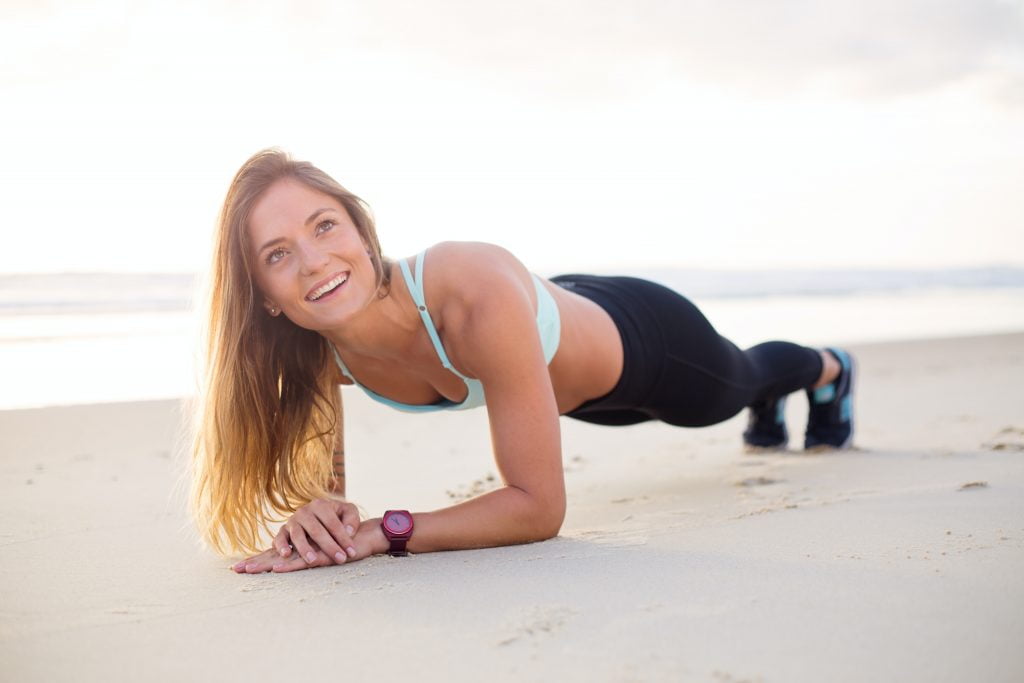
Protect You From Injury
As you know, your arm and shoulder can move in a variety of ways because they’re attached to your body by only one joint (the acromion). This also means that it is highly vulnerable to both particularly painful and debilitating injuries; we can say we understand how frustrating it is when you get an injury.
That is why doing push-ups regularly is the best way to strengthen your upper body and prevent painful shoulder injuries from becoming a reality. It doesn’t have to be uncomfortable or physically taxing either! In fact, there are many different types of push-ups that can cater to a range of fitness levels so whether someone is a complete beginner or more advanced flexible user, they should still be able to participate without difficulty.
You can do it anywhere
Push-ups are a typical exercise that can be done anywhere. It requires no gym membership or equipment to do it. It’s a great way to improve strength and build muscle with its typical push-ups motion, which can strengthen your chest, biceps, shoulders and back. Push-ups are very simple and easy to do so feel free to modify them by bending your knees for a more beginner version or standing on your tippy-toes for an advanced version. Push-ups can help you develop great upper body strength no matter where you are!
How to do Push ups for biceps:
Step 1: Starting Position
Kneel on an exercise mat or floor with your legs spread comfortably wide. Start by slowly bringing your feet behind you, allowing them to touch. Slowly bend forward to place both palms flat on the mat, positioning your hands shoulder-width apart with your fingers facing forward or turned slightly inward. Slowly shift your weight forward until your back is fully extended and supported by placing your hands on the mat. This next part should be really important – Stiffen your torso by contracting your core/abdominal muscles (“bracing”), your glute and quadriceps muscles, and then aligning the head with the spine. Place your feet together with ankles dorsiflexed (toes pointed towards shins). Now you are in a full plank position.
Step 2: Downward Phase
Start by slowly lowering your bottom towards the ground as though you were about to sit on a chair like a lady with good posture. Make sure that you still think like a queen and keep your back upright and shoulders strong. You should not splay outwards after you have lowered yourself; instead, keep your elbows proud and airy. Once you feel like you’ve touched the floor or flat land, do not allow yourself to raise yourself again until your body is once more aligned with where it started from (like a prime meridian); this prevents unnecessary pain or discomfort which might occur down the line if one’s spine is allowed to bend beyond appropriate limits.
Step 3: Upward Phase
Press up by extending your arms. This will engage all areas of your body including your chest, arms, back, shoulder and abdominal muscles. While you do this make sure to maintain a straight back. Your knees should also be in line with your feet! Hold the position for at least 10 seconds before returning to the starting position. Think about pushing the floor away from you rather than concentrating on pulling yourself up with your hands!
Pushup Variations:
Regular Pushup
While starting out with bodyweight exercises, perfecting the basics is a key element. It’s important to have a proper stance and posture so as to get the most out of your workout. Remember, focus on doing things correctly the first time around so as to ensure your training session can be effective.
As you start growing stronger and improving your fitness levels at each session, you’ll find there’s no such thing as perfection anymore because progress doesn’t standstill. When you feel like regular push-ups are too much at first, don’t worry! You can use knee push-ups to work for the same muscle group until you’re ready for more and eventually do full routine push-ups later down the track.
Incline Pushup
The incline pushup is basically a standard push-up but requires you to position your hands on an incline, either with your feet elevated or knee bent. It trains the upper chest area, which includes most of the pectoralis major muscle which is exactly what makes this exercise so beneficial when you are trying to target your pecs in particular.
Decline Pushup
The decline push-ups are great for targeting your lower pecs and triceps. It isolates the upper portion of the chest and involves a lot of bicep contraction as well. To perform the decline pushup, place your feet in a raised setting and do regular push-ups with your arms bent at a 90-degree angle. Or you can also use something elevated to help elevate your feet such as a chair or blocks that have been cut from hand towels.
ALSO READ: Single Leg Press – Technique, 3 Variations & Benefits For Impressive Glutes
Diamond Pushup
This one will require some practice and build-up to be able to perform correctly, but you’ll quickly learn how effective it is when applied effectively. You’ll need to form a triangle in which your hands and arms will be in the centre of the chest in what’s called full extension in Pilates. This exercise targets not only the chest muscles which most people tend to work on but also ones that aren’t always targeted like triceps, shoulders, and upper back muscles!
Wide Pushup
Doing wide push-ups is a workout move that can help get one’s pectoral muscles in shape by widening the distance between your arms by two steps more than the regular pushup. This helps get one’s muscles working. To do the wide pushup, hold your body in a push-up position with your arms spread out wider than normal. If possible, make the gap between your hands about two feet wider than it would be for a regular pushup. The result is that you end up working the outer area of your chest more intensely and therefore give it more of a proper shape.
Pike Pushup
Along with targeting the chest, the pike pushup is one of the best exercises to increase shoulder strength. If done regularly, you’ll notice cuts or muscle definition on your shoulders in no time. You can do the pike pushup exercise along with the regular pushup to help strengthen your chest, shoulders, and triceps. To perform this exercise, start by getting into an elevated pushup position with one leg bent at an angle (known as a pike) and the other out straight behind you. Next, lower yourself toward the ground slowly before pushing back up. You’ll notice major results fairly quickly if you commit to doing this exercise regularly!
ALSO READ: 12 Best Compact Home Gym For Your Apartment
Spiderman Pushup
The Spiderman Pushup is a great exercise to work your abdominal area as well as your core. In order to achieve the proper form for this exercise, there are certain key points you need to consider as follows: Keep your back straight as much as possible while extending one leg out toward the side (it doesn’t necessarily have to be high in the air). Your other arm should be supporting you on the ground with your elbow bent at about ninety degrees. You may also choose to make fists if your palm gets sore.
Explosive (Clap) Pushups
It’s important to work different muscles consistently in order to prevent injuries. If you’re only performing the standard push-up throughout your routine, it can set you up for injury or discomfort. Variation is key – whether that means doing drop pushups (which is basically a steady controlled fall into the start of a pushup), clapping pushups (in which one pushes off hard enough with each hand to make sure there’s an audible snap), or even using multiple surfaces like gyms, mats or even your bed or floor!
Hindu Pushup
The Hindu pushup is one of the twelve steps in the Surya Namaskar. The word Surya means “sun”, namaskar means to greet someone with respect. It’s a great exercise for building strength in your chest, arms, and back! These are also called prostrations because when you perform them you lower yourself to touch your head to the floor which is the literal meaning of prostrate.
Archer Pushup
The Archer Pushup is almost as difficult as the original pushup to do, but with a slightly different twist. In order to do it properly, you need to have a total upper body workout. It’s harder than the other versions because you have to put all of your body weight on one arm. If you’re able to do this exercise easily, then you know that your chest muscles are well-defined and toned! Remember, practice makes perfect and once you feel like this exercise is no longer challenging enough, then move on to more complicated versions and rest assured that you’ll have yourself one well-defined chest!
Final Thoughts:
Did you know that the best way to build bigger biceps is to do Push Ups For Biceps? Not only will pushups help you build bigger biceps, you’ll also build your deltoids, serratus anterior, and triceps. That’s because you are using your body weight, so you’re engaging more muscle groups than you would with an arm-specific exercise. So get up off the bench and get your pushups in!
FAQs:
Do Push-Ups build biceps?
Experts say that pushups can in fact strengthen not only your shoulders and back but also your biceps. Contrary to popular belief, it’s actually the pectoral muscles (chest) that are primarily worked in a pushup. However, when doing them you also target your triceps (back of upper arm), delts (shoulders), and core muscles for stabilization!
How many pushups should I do to get bigger arms?
If you only use push-ups to tone your triceps (push-ups are an exercise usually done on the floor where your hands are placed on the floor and your feet are kept up slightly off the ground), it is best to do these exercises at least twice per week for maximum benefits. However, if you also weight train (training with weights builds muscle mass) then it is best to allow enough time to pass before hitting that same muscle group again for maximum results; typically weightlifters take about 2 days off before hitting that particular muscle group again.
Why aren’t my biceps growing?
There are two main mistakes people make when it comes to their biceps training which seems to prevent them from growing. Overworking the biceps by adding additional biceps-focused workouts and trying multiple exercises is one of these. What you might not know is that this issue can be resolved rather easily by replacing the approach with dedicating more days for rest, then trying changing your routine on an irregular basis.
Can you train your biceps every day?
When it comes to training arms for optimal muscle growth, you should think of your arms like any other muscle in your body. They, like most other muscles, respond well to regular stimulation and fatigue. The key is to find the right frequency that hits an effective balance between not overdoing it and working hard enough.
That amount of training can range anywhere from two times a week on up to more than six which is just as often as possible without overworking. The more frequent you train them though, the less you’re going to do on any one occasion so think about optimizing rest periods as part of the strategy here because doing too much on a daily basis will simply put more stress on your connective tissue and cause an avalanche effect of sorts throughout your body.

